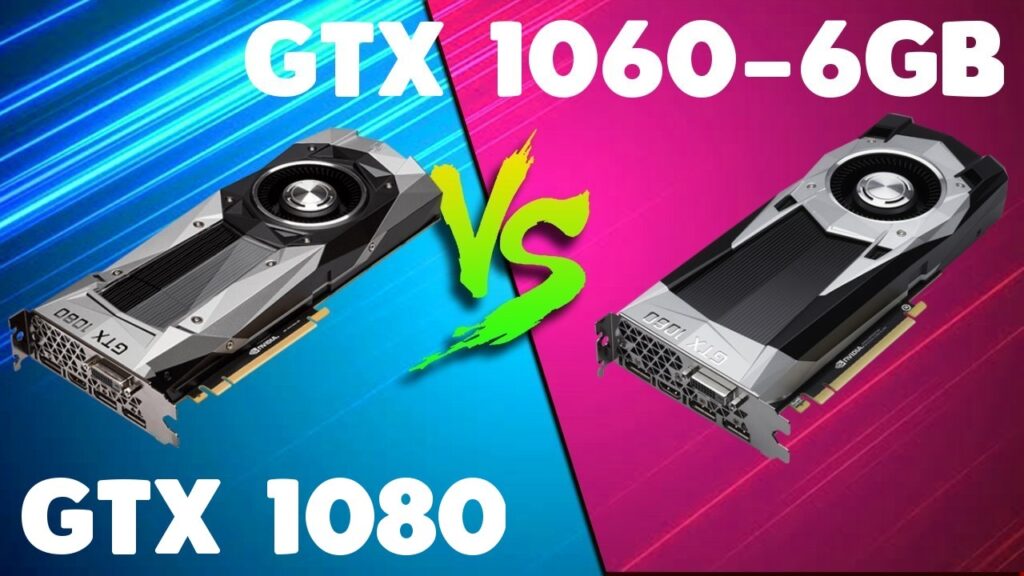Nvidia GeForce GTX 1080 vs GTX 1060: A Comprehensive Comparison

Nvidia GeForce GTX 1080 vs GTX 1060: A Comprehensive Comparison
The Nvidia GeForce GTX 1080 and GTX 1060 are two GPUs from Nvidia’s Pascal architecture lineup, targeting different user segments. The GTX 1080 is a high-end card designed for demanding gaming and professional applications, while the GTX 1060 is a mid-range option catering to budget-conscious gamers. This article delves into the key differences between these GPUs to help you decide which one suits your needs.
Specifications Comparison
| Feature | GTX 1080 | GTX 1060 |
|---|---|---|
| Architecture | Pascal (16nm FinFET) | Pascal (16nm FinFET) |
| CUDA Cores | 2560 | 1280 |
| Base Clock | 1607 MHz | 1506 MHz |
| Boost Clock | 1733 MHz | 1708 MHz |
| Memory | 8GB GDDR5X | 3GB/6GB GDDR5 |
| Memory Speed | 10 Gbps | 8 Gbps |
| Memory Bandwidth | 320 GB/s | 192 GB/s |
| Power Draw (TDP) | 180W | 120W |
| Price at Launch | $599 | $199–$299 |
Key Differences
1. Performance
- GTX 1080:
The GTX 1080 is significantly more powerful, with double the CUDA cores and faster memory (GDDR5X). It excels in 1440p and 4K gaming, consistently delivering high frame rates with ultra settings in modern AAA games. - GTX 1060:
The GTX 1060 is a capable performer for 1080p gaming, handling most titles at high to ultra settings. It struggles with 4K gaming and may require settings adjustments for newer, more demanding titles.
2. Gaming Resolutions
- GTX 1080: Ideal for 1440p and 4K gaming. For example, in The Witcher 3, it delivers over 60 FPS at ultra settings in 4K.
- GTX 1060: Best suited for 1080p gaming, providing smooth performance at 60 FPS or higher in games like Overwatch and GTA V.
3. Memory and Bandwidth
- GTX 1080: The 8GB GDDR5X memory with a bandwidth of 320 GB/s ensures it can handle higher resolutions and textures with ease.
- GTX 1060: Available in 3GB and 6GB GDDR5 variants. The 6GB model offers better longevity and performance for modern games, while the 3GB version may face VRAM limitations in demanding titles.
4. Power Consumption
- GTX 1080: Requires 180W, making it suitable for builds with robust power supplies.
- GTX 1060: Consumes only 120W, making it more efficient and suitable for budget builds with lower power capacity.
5. Price and Target Audience
- GTX 1080: Designed for enthusiasts and professionals willing to invest in high-end performance for gaming and content creation.
- GTX 1060: Aimed at budget gamers looking for solid 1080p performance without overspending.
Use Cases
| Scenario | Recommended GPU |
|---|---|
| 1080p Gaming | GTX 1060 |
| 1440p Gaming | GTX 1080 |
| 4K Gaming | GTX 1080 |
| VR Gaming | Both (GTX 1080 performs better) |
| Content Creation | GTX 1080 |
| Budget-Friendly Builds | GTX 1060 |
| Energy Efficiency | GTX 1060 |
Pros and Cons
GTX 1080
Pros:
- Superior performance for 1440p and 4K gaming.
- 8GB GDDR5X memory ensures better future-proofing.
- Excellent for VR and high-end content creation.
Cons:
- High power consumption (180W).
- More expensive than mid-range alternatives.
GTX 1060
Pros:
- Affordable and power-efficient.
- Great for 1080p gaming.
- Available in 3GB and 6GB variants for flexibility.
Cons:
- Limited performance at higher resolutions.
- 3GB variant may struggle with newer games.
Conclusion
The Nvidia GeForce GTX 1080 and GTX 1060 cater to different audiences. If you’re an enthusiast seeking high performance for 1440p or 4K gaming, the GTX 1080 is the clear winner. On the other hand, the GTX 1060 is perfect for 1080p gaming, offering a budget-friendly and power-efficient option.
Choosing between the two depends on your gaming resolution, budget, and performance requirements. For those on a tight budget, the GTX 1060 remains a great entry-level choice, while the GTX 1080 is ideal for gamers and creators who demand top-tier performance.

